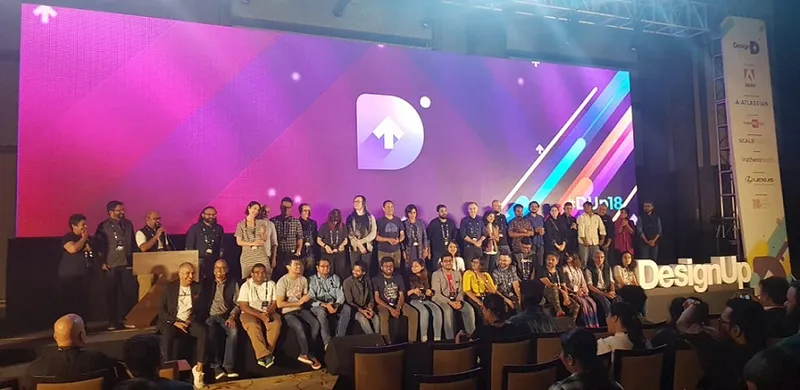Design features, futures, and fiction: DesignUp 2018 wraps up with a call to action for designers
The DesignUp conference concluded with valuable insights on participatory research, ethics, inclusion, constraints, and finding problems in future worlds using design.
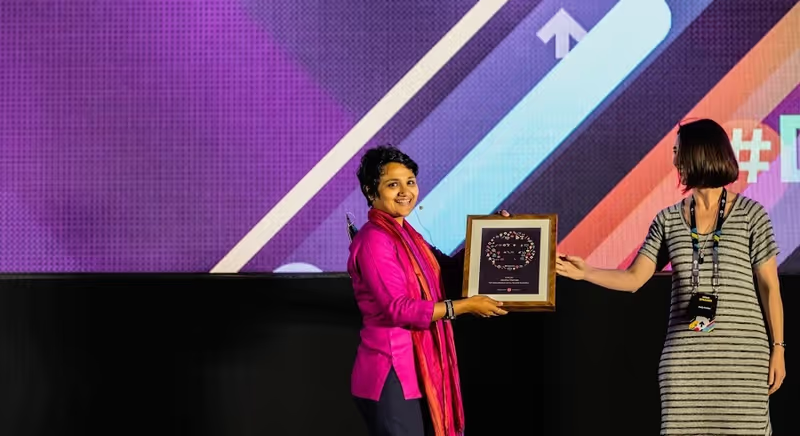
The final day of the DesignUp 2018 conference wrapped up in Bengaluru with five keynotes, two panels, 8 talks, 10 workshops, and even a magic show (see Part 1, Part 2, and Part 3 of our coverage).
Over the years, DesignUp has come to be regarded as one of the Top 20 design conferences in the world (see our coverage of the 2017 edition here). Design is acknowledged as a key success factor for enterprise growth, environmental sustainability, social inclusion, and future visioning (check our D-Zen section for more articles, conference reports, and expert tips on design).
Here are my nine key clusters of takeaways from the final day of DesignUp 2018; see also the visual sketchnotes by Rasagy Sharma, Ankita Dash and Hardik Chandrahas (from the Twitter hashtag #DUp18).
1. Participatory research
“Participatory research and co-design techniques involve humans who will ultimately benefit from design, in the entirety of the design process,” explained Katja Forbes, Founder of Syfte, in an interview with YourStory. Large and small organisations should get real input from their target audiences and users before they spend on designing and developing their solution.
“For example, I used it very powerfully at a large bank in Australia to identify new opportunities for how they could better manage new products for business customers. They involved their staff and customers in workshops together to find new ways of doing things. By working through activities that elicited their pain points and desired better future, we were able to identify more than 40 opportunities for the company,” Katja said.
Design thinking provides a framework for non-designers to pick up the tools of design and use them to solve business problems, she explained. “In theory that’s great, but in practice, they need coaching and guidance on how to do it well and successfully -- and not just generate a wall full of useless post-it notes,” she cautioned.
Designers have much more practice in synthesising the data collected and generated. “Non-designers can collect and create data, but often don’t know what to do with it and how to move it forward to a solution. The more people who know how to use the tools of design, the more problems we hopefully solve. Design coaching is the latest thing design humans need to master,” Katja explained.
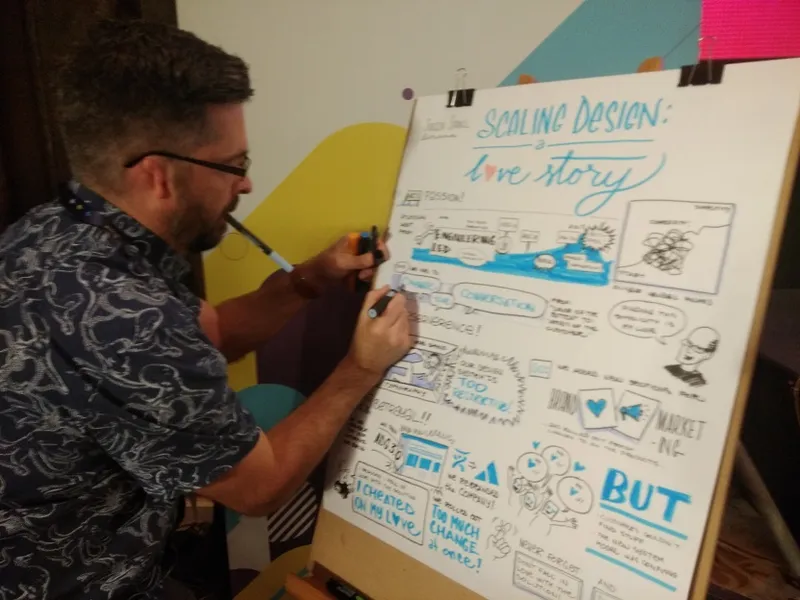
2. Design, constraints, and mistakes
The design journey is not smooth and linear, and there will be the inevitable bumps, detours, backtracks and abandoned paths. “Uncertainty is creativity,” explained Yonatan Levy, author of The Other Ideas: Art, Digital Products, and the Creative Mind (see my book review here, as well as the YourStory PhotoSparks series on art and creativity).
“Turn uncertainty into creative power. Embrace your constraints. Adopt mistakes,” Yonatan advised. Having fewer resources boosts brain power, while confidence lulls us to sleep. As examples, he cited Wikipedia (which ran out of money for professional editors, and stumbled upon the more successful crowdsourced model) and jazz great Miles Davis (who launched a signature trumpet solo upon a drummer’s mistiming).
3. Designing for highly impatient users
While speed is of the essence in the digital age, rapid response is even more critical in sectors like taxi services and food delivery. Srinath Rangamani, Head of Design, Swiggy, shared some of the company’s design principles: relevance, speed, personalisation, and graceful degradation.
Uber’s design principles include Eliminate surprises; Don’t just tell me, guide me; and In my language, at my pace, explained Anurag Arora, Product Designer, and Naman Mathur, Researcher for International Growth, at Uber.
Anticipate needs, simplify choice, and reduce the number of steps, advised Srinath, who uses heat maps to visualise demand patterns. “Update customers on the driver’s travel progress to reduce their anxiety,” he added.
“Chase the full story,” Srinath suggested. Dig beneath customer needs and overall demand patterns. “Keep an eye open for micro-experiences and micro-conveniences. What if the user wants to order just one gulab jamun,” he asked.
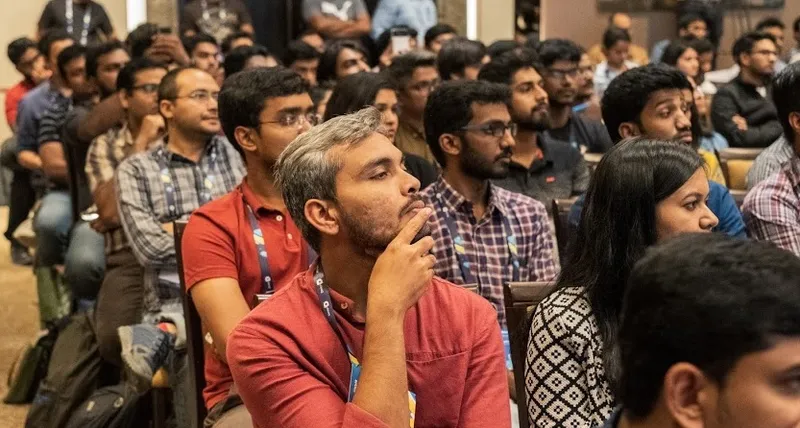
4. Design systems and culture
Much debate has focused on whether design systems spur or stifle innovation. Design also doesn’t end with completion of the product, it extends to marketing.
“Designing design systems is fairly easy, but adopting them and maintaining them is hard,” cautioned Jurgen Spangl, Senior Design Manager at Atlassian. The company offers tools and platforms for software developers such as Bitbucket, Jira, and Confluence.
He shared an example of the company’s rebranding effort as it transitioned from being engineer-led to experience-led. Key principles are design simplicity and openness, with respect to tasks such as finding objects and collaboration. “Be in love with the problem, not the solution,” Jurgen advised.
5. Startups and design
From launch to scale stage in startups, design talent is needed to do research, generate actionable insights, and produce something with these insights. “Sometimes you can find all these roles in one human but not often. There should be a favourable ratio of the number of designers to developers. For example, companies like Atlassian have gone from 1 designer: 25 engineers in 2012 to 1 designer: 9 developers in 2018,” observed Katja Forbes of Syfte.
She cited design leadership coach Jesse James Garratt, who says the ratio should be a minimum of 1:12 but ideally 1:4. “I think it depends on what your organisation can afford as well. The answer is I think, more designers than you think,” Katja added.
6. Design for inclusion: community radio
While much of design talks about products, services, or digital media, community radio also has a major role to play for socio-economic inclusion in remote areas. “Community radio can enable the sustainable development goals. It offers power and hope at the bottom of the pyramid, where it matters most,” explained Sarita Thomas, Founder-Director of People’s Power Collective (PPC), in an interview with YourStory.
PPC currently focuses on the isolated and often overlooked people in the Himalayas of Uttarakhand, North India, and the Mandakini River Valley Region. “Community radio enables community cohesion along with community owned and driven empowerment,” she explained. The barefoot reporters, producers, researchers, programme directors, and listeners shape their own content on anything and everything that matters to them.
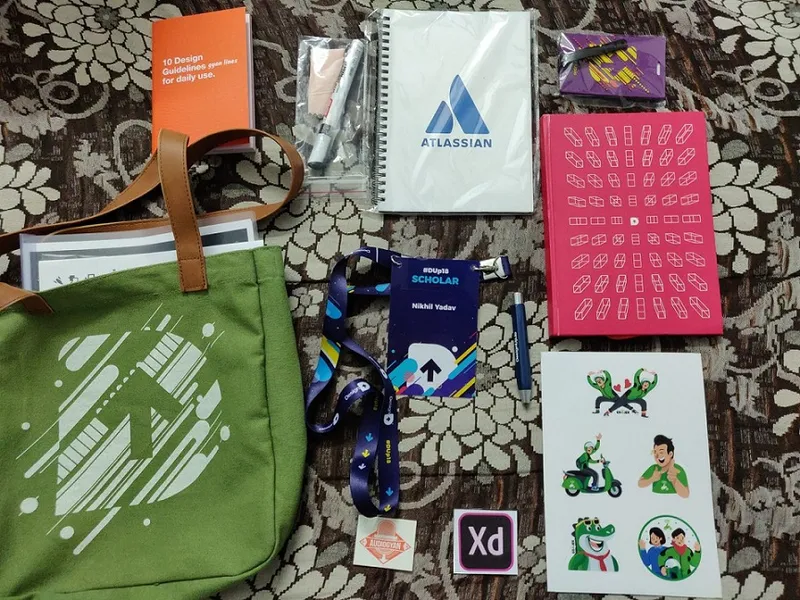
“With a collaborative and bottom-up approach to our training and capacity building programmes, immersion-based engagement is at the absolute core of our design. Living in their homes, working in these hills, and being adopted by the community rather than the other way around, has been my boldest, fondest, and most meaningful learning experience to date,” Sarita explained.
Though India is in a telecom boom, many remote parts of the country are in “media dark” zones. “Many citizens still struggle to own a basic mobile phone, and poverty is not the reason why. When digital finally arrives big in our villages, we’ll happily adapt, adopt, and grow with it. Convergence is key and we’re already working on it,” she added.
“Yet, all these phones remain just the technology and it’s not even the half of it. The intrinsic inclusive design and the principles that guide and shape real community radio, that’s the game changer,” Sarita said.
“Voice-driven communication can capture the tone, the mood, the emotion and such critical nuances. It also offers a sense of personality and personal touch. It’s interactive, engaging and brings in a level of trust. Voice makes an impression – good or bad. It’s the basic traditional means of communication, isn’t it? To speak and to listen,” she explained.
Sarita regards community radio as a real friend and a voice of the community. She was earlier at BBC World Service, but found the medium to be more one-way as compared to community radio. “The trust, following and engagement that community radio elicits is unparalleled. It offers artists appreciation, celebration and honour. Citizen journalists can truly have the power to be the change they wish to see. The voice of one, morphs into the voices of many,” Sarita said.
7. Design and ethics
The rise of AI, ML, robotics, and Blockchain poses a new challenge to designers and business leaders. Data is becoming ubiquitous, and is regarded as the new oil, or even water and oxygen.
Designers need to start coming to terms with how to design using data, Katja Forbes said. She cited Kim Goodwin, author of Designing for the Digital Age, who urged in a tweet: “Don’t be data-driven. Be data-informed. Metrics should never be in charge because they have no moral compass.”
“Data feeds the algorithms of AI and if we don’t understand data, its biases and its power, we’ll be left out of the picture,” Katja said. “Ethics are also a huge can of worms for designers to unpack and get uncomfortable about. We instil our biases and morals into everything we create and design, consciously and unconsciously. We need to be wide awake to that fact and ensure we hold ourselves and others accountable,” she advocated.

8. Design, fiction, and future
A truly mind-boggling keynote address was delivered by Tatiana Toutikian, Spatial Designer in Parallel Universes, who shuttles between Beirut, Helsinki, and Shanghai. She is the Founder of IXDA Beirut, Collaboration Manager at MENA Design Research Centre, and Strategy Manager of Beirut Design Week.
“We have a misconception that design only solves problems. Design also needs to find future problems. Design is a catalyst to problems,” she explained. Technology change can be strange and not always pleasant, and design can help unearth some of these complexities.
Speculative design in the form of “social fiction” can actually provoke us to envision future worlds and what upcoming problems there may be. Science fiction writers and even Hollywood movies like Minority Report have been framing such issues. “The media has a tremendous effect on technology design and perception,” Tatiana said.
She shared a fascinating range of examples on how design could shape the potential, probable, preferable, plausible, and possible. She showcased them through provocative and hypothetical “functional fiction” newscasts called Agreeable News, with features such as Ethics Arcade, Praying in the City, and even Quantified Death.
Tatiana also identified a number of future uncertainties to watch, such as AI with multiple personas, legal status of cyborgs, digital omnipresence, and even crypto-mafia. Designers should be asking questions and not just providing answers, they should be working on implications and not just applications, she urged.
9. The bigger picture
Many of the speakers urged designers to think beyond skills and systems to the broader canvas of humanity and social impact. In an inspirational keynote address and insightful interview with YourStory, Ravi Naidoo, Founder of Design Indaba in South Africa, described a number of design initiatives in affordable housing, social campaigns, and political activism (see my separate in-depth piece here).
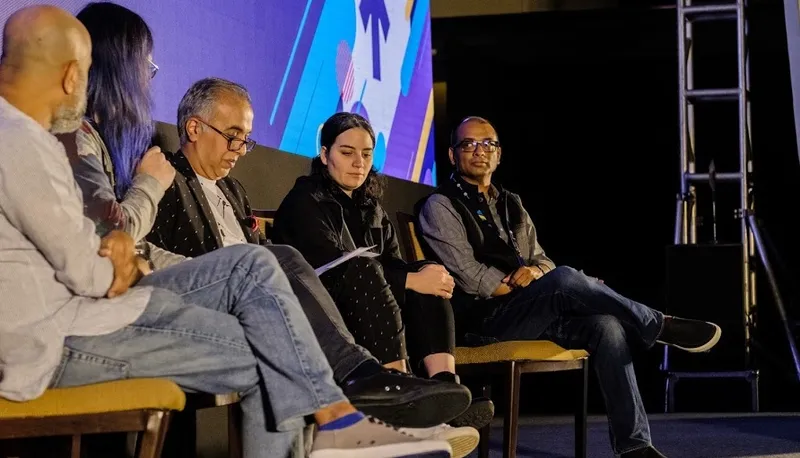
Designers need to address what happens after their product is used as well, said Thomas Kuber, Digital Design Director at DesignIt, in an interview with YourStory. “We should also have design for reuse, repair, share, and dispose. Look at the waste from disposed plastic bottles – designers need to be more aware of the externalities of what they create,” he urged.
Design is no longer seen as “putting lipstick on the pig,” but needs more representation at the level of key decision makers. “Designers should also get more closely involved with open source communities, which so far focus for the most part on developers for developers,” said Thomas.
Emerging trends to watch include designing for the new generation of users who are highly digitally savvy, said Divya Viswanathan, Co-Founder at Tropic Design & Innovation. “Seek out creativity at the edges,” she said, showing examples of young skateboarders making videos of their practice.
The concluding panel also focused on developments in the field such as AI. “Don’t fear AI, fear the mental models, motives, and values of those creating these AIs,” said Tatiana Toutikian.
“The cognification layer will be added everywhere, and we will need to work on augmented intelligence in the near term,” said Tirthankar Dash, Head of Design Strategy at Quantum Consumer Solutions. Issues of ethics will become prominent, and some large companies are hiring philosophers as ethics officers.
The panellists also addressed the prevailing model of robots and AI as servants or slaves. Why don’t we have Siri set up in such a way that it responds only if we say Please, Siri, they asked.
“Designers have so much power today, thanks to technology. With power comes responsibility. Use your design superpowers for good,” signed off Jay Dutta, Founder-Curator of DesignUp. The conference has also partnered with Design Indaba to launch an open challenge to the global community, in the area of community media.
